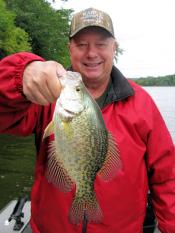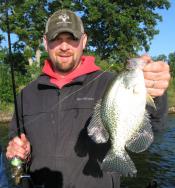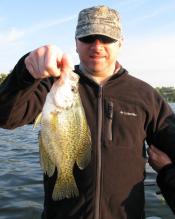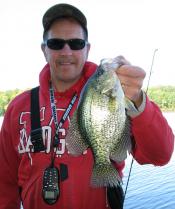 September crappie fishing on Lake Wisconsin has become an annual right of passage for my boat. The numbers and size of the fish aren’t as good as it was five or six years ago but if your willing to put in a solid effort, it can still pay off with some nice slabs.
September crappie fishing on Lake Wisconsin has become an annual right of passage for my boat. The numbers and size of the fish aren’t as good as it was five or six years ago but if your willing to put in a solid effort, it can still pay off with some nice slabs.
The locations where we find these fish are the same locations we found them in years ago. The difference is the number of fish found in each location.
Some people will no doubt argue that the local fishing guides are the problem. That’s never going to change and goes with the territory.
And for sure this is a can of worms many will say I never should have opened. Especially since I personally have little or nothing to gain from bringing it up. But shying away from something just because it may not shine the best light on me personally doesn’t seem fitting in this case. Instead, I’m going to shine a light on this issue and hope it leads to a positive discussion. Pretty high hopes no doubt but lets see what happens.
 To begin with, although crappie fishing on Lake Wisconsin is not nearly as good as it was 5 or 6 years ago, it’s also not in a crisis situation either and has actually improved slightly from 2 or 3 years back.
To begin with, although crappie fishing on Lake Wisconsin is not nearly as good as it was 5 or 6 years ago, it’s also not in a crisis situation either and has actually improved slightly from 2 or 3 years back.
What happened you may ask?
As far as I know there’s never been any specific studies done so that’s also sort of up to individual interpretation. But from my point of view, there are two main factors contributing to the overall decline.
Number 1 is weather. Bad weather and bad timing to be more specific.
Several years in a row, we’ve had severe to moderately severe cold spells hit right as the crappies were moving onto there spawning grounds. These cold spells didn’t last for a day or two but hung around for anywhere from a week to more than three weeks. The end result of these cold spells was a large percentage of the crappie population did not spawn or if they did spawn, there eggs or young of the year didn’t survive.
Now I’m not a fisheries biologist and no studies were done so the above hypothesis is nothing more than mine & mine alone. The only thing I do have is a lot of years of fishing experience and that’s what I’m relying on to form the above hypothesis.
 The 2nd problem is more controversial. That being fishermen themselves and bag limits that could use some revising to adjust for the advent of better electronics, better lures and better overall equipment in general which naturally leads to a better ability of those who chase these fish to consistently locate and catch them.
The 2nd problem is more controversial. That being fishermen themselves and bag limits that could use some revising to adjust for the advent of better electronics, better lures and better overall equipment in general which naturally leads to a better ability of those who chase these fish to consistently locate and catch them.
What hasn’t happened is any sort of review on the daily limit or bag limits for crappies or panfish in general.
In the spring, these fish have a bad tendency to use the same spawning grounds year after year, after year, after year. And in the fall, although we don’t see as large of schools on the same locations as in the spring, they still use the same locations over, and over, and over again.
Basically once an angler has figured it out, it’s relatively easy to go out and put a bunch of fish in the boat. The daily possession limit is 25 panfish with a bag limit of double the daily possession limit.
Many fishermen have figured out exactly where these fish spawn and they will target these area’s for days on end come spring until they hit it just so they can pack there freezer with crappies.
The same can happen in the fall although with so many competing interest in the fall, it doesn’t appear to be as common.
 In order to solve any problem, the first thing that needs to be done is to admit there is a problem. As I’ve already said above, crappie fishing on Lake Wisconsin is not in a crisis situation. Not yet anyway.
In order to solve any problem, the first thing that needs to be done is to admit there is a problem. As I’ve already said above, crappie fishing on Lake Wisconsin is not in a crisis situation. Not yet anyway.
At the same time however, knowing the potential of Lake Wisconsin makes me think that we are wasting a tremendous opportunity to show case just how great crappie fishing could be if we would make some minor adjustments in how we manage it. (my belief)
What I personally would like to see is this:
Keep the panfish limit at 25 fish per day and the possession limit at double the daily bag limit.
Within that daily bag limit of 25 panfish, only 10 could be of any one species. This way and angler could still take 25 fish home on any given day if that’s what they really wanted to do while still protecting against over harvesting of any one species.
What I would really like to know, is what do you think?
Good, bad or other, I would really like to hear what you think. Especially those of you who frequently fish Lake Wisconsin.